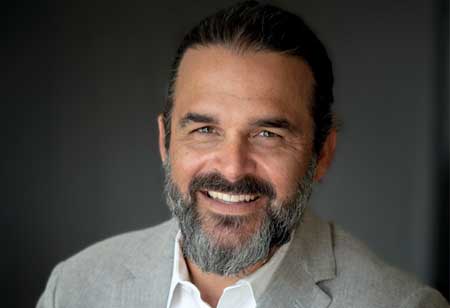Thank you for Subscribing to Healthcare Business Review Weekly Brief

The Earned Patient: Using Net Promoter Score (NPS) To Improve Your Patient's Experience
Healthcare Business Review
Consumerism is changing healthcare at an accelerated rate. In a shifting economy tinged by inflation, post-pandemic stress and fatigue, work-from-home routines, and changing lifestyles and not to mention AI-guided health information available at their fingertips, consumers want an improved healthcare experience. Specifically, they’re looking for quality, convenience, and value within their healthcare journey. These factors have led to a patient-centered, retail-quality experience-transformed paradigm in healthcare. An increase in data, digital transformation, and the pressure to build a brand with stellar customer loyalty is driving providers to push past the status quo.
It’s no secret that the healthcare industry as a whole has been woefully slow to focus on customer service. As the digital retail model becomes more prevalent, consumers expect and demand more at every point along the care spectrum. This is shifting the focus in healthcare from treating patients to serving them. From the beginning (initial outreach and appointment) to the end (appointment follow-up and billing), patients are increasingly dissatisfied with historically accepted care models. Patients want more seamless and accessible care – or the right care at the right time – with a reduction in friction factors such as long wait times or hidden treatment costs.
Healthcare organizations of any size need only to look at the nation’s top healthcare providers for clues about the importance of consumerism in healthcare. These organizations understand the critical importance of consumerism and how it affects operational decisions. They are hiring customer service management leaders from companies like Amazon and Disney, who focus on building loyalty and driving multi-channel engagement by delivering seamless online and offline customer experiences. From improved communication to efficient scheduling and proactive follow-up, a strong customer focus on patient satisfaction incorporates e-commerce strategies. Finding a provider and scheduling an appointment should be as easy as browsing an online store and offering a one-click check-out.
Which is why the time for change is now. Listening to patient's wants and needs has been a critical step in the current evolution of healthcare. Healthcare organizations are rapidly rethinking their operating models and commitment to building patient loyalty. To help healthcare organizations understand where they need to improve to drive satisfaction and loyalty, organizations are implementing the one-question metric known as Net Promoter Score (NPS). NPS is useful because it gives organizations a quick snapshot of how well they are, or aren’t, creating exceptional patient experiences and building loyalty among their patient base. As competition is tougher than ever for healthcare organizations, the providers that incorporate NPS in their organizational structure will lead the pack, not lag.
NPS metrics help providers make data-based business decisions on multiple levels in real-time. Its beauty lies in its simplicity: a single number reference point that indicates patient satisfaction. And when there’s satisfaction, there’s loyalty.
Consumers who are given the best end-to-end experience beyond their clinical visit make the difference between a repeat customer and a one-time visit. By measuring satisfaction through loyalty, NPS offers valuable insights for any organization wanting to deliver quality, favorable interactions along the consumer journey.
NPS has three main components: promoters, passives, and detractors. Promoters are fully satisfied with their experience and will rate their experience favorably. Passives are baseline satisfied but need to be more enthusiastic and engaged with their level of care or provider. And lastly, detractors are unsatisfied with their experience for any number of reasons. By asking how likely a patient is to refer a medical facility to another, the NPS takes a scientific approach to gauge overall satisfaction. If a patient responds they are likely to recommend a provider, and the organization gains confidence that they are delivering a profitable, loyal consumerism-focused service.
Healthcare organizations must think like successful retailers to meet evolving consumer demands and build loyalty
With NPS as a barometer for where medical care providers stand when it comes to patient satisfaction, leaders can promote a culture of continuous feedback and improvement. Understanding NPS allows healthcare organizations the opportunity to see the patient care experience from a holistic view. With this methodology, everyone from the CEO to facilities management is empowered and expected to deliver exceptional patient experience. The organizational shift happens when patient satisfaction is not seen as a department-level endeavor but rather an entire organizational transformation shaped by its own culture.
Front-line employees need more support from leadership to deliver excellent customer experiences. Organizations need to train staff to reach out to a detractor or passive patient, address the situation and create a culture of positive human interaction. Patients need to feel valued. And valued patients return (referring providers to their friends and family). Failure to align organizational processes with customers' needs can result in decreased customer satisfaction, increased patient churn, and reduced revenue.
It's well documented that patients are in the driver’s seat when it comes to their health and decision-making about when and where to seek care. Healthcare organizations that are proactive in their approach to the customer experience will only be better positioned for short-term and long-term success. The time of thinking of the patient as a cost center is long gone. Healthcare leaders must take ownership of the customer experience and recognize which areas need improvement. In short, its time healthcare organizations start thinking like successful retailers.









